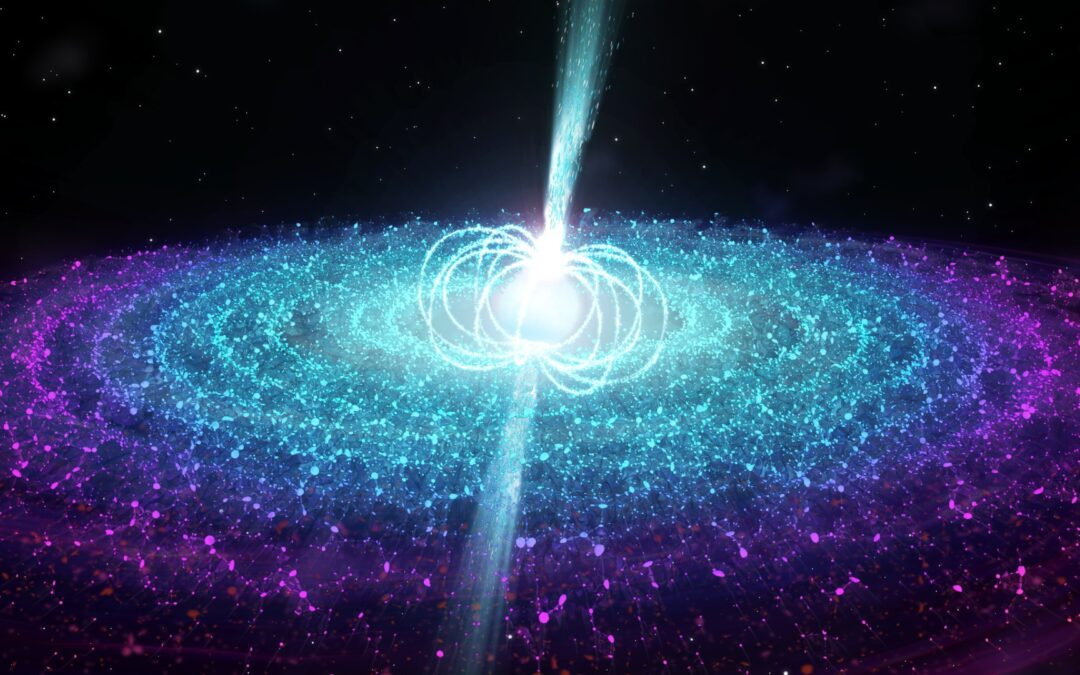In the vast and mysterious cosmos, neutron stars stand as some of the most enigmatic and intriguing celestial objects. These cosmic marvels are the remnants of massive stars that have undergone a cataclysmic explosion, known as a supernova. As we delve into the fascinating world of neutron stars, we will explore their formation, characteristics, and the pivotal role they play in our understanding of the universe.
The Birth of Neutron Stars:
To comprehend the awe-inspiring nature of neutron stars, it’s crucial to grasp their origins. These cosmic behemoths are the remnants of massive stars that, after living out their extraordinary lives, meet a dramatic and explosive end. When a massive star exhausts its nuclear fuel, it can no longer withstand the gravitational forces crushing it inward. This leads to a violent supernova explosion, during which the star’s outer layers are expelled into space, leaving behind a compact and incredibly dense core—the neutron star.
Unimaginable Density:
Neutron stars are renowned for their mind-boggling density. Imagine compressing the entire mass of the Sun into a sphere roughly 12 miles (about 20 kilometers) in diameter. This results in densities so extreme that a teaspoonful of neutron star material would weigh as much as a mountain on Earth. Such intense gravitational forces create an environment unlike anything we encounter on our home planet.
A Rotational Marvel:
One of the most captivating aspects of neutron stars is their remarkable spin. As these remnants form from the collapse of a massive star’s core, the conservation of angular momentum causes them to spin at incredible speeds. Neutron stars can complete hundreds of rotations per second, earning them the moniker “pulsars” when their beams of radiation are detectable from Earth. The precise mechanics behind their rapid rotations continue to be a subject of intense scientific study.
The Electromagnetic Spectrum:
Neutron stars emit a wide range of electromagnetic radiation, from radio waves to gamma rays. Their intense magnetic fields and rapid rotation generate beams of radiation that sweep across the cosmos, much like the beam from a lighthouse. When these beams intersect with Earth, astronomers detect them as pulses, hence the name “pulsars.” This phenomenon has been instrumental in our understanding of neutron stars and has allowed us to map their properties with great precision.
Exotic Matter and Conditions:
The interior of a neutron star is a realm of extreme physics. The matter within is subjected to staggering pressures, causing the electrons and protons to merge, forming neutrons. This is why they are called neutron stars. Beyond this, even more exotic forms of matter may exist, such as quark matter, hypothesized to occur at the very core.
The gravitational pull near the surface of a neutron star is so intense that it distorts spacetime itself, a prediction of Einstein’s theory of general relativity. This gravitational lensing effect has been observed and confirmed by astronomers, providing further evidence of the accuracy of Einstein’s groundbreaking theory.
Contributions to Scientific Knowledge:
Neutron stars have not only captivated our imagination but have also played a pivotal role in advancing our understanding of fundamental physics. Their extreme conditions help us test theories of matter at the limits of density, and their intense gravitational fields allow us to probe the fabric of spacetime itself.
Additionally, neutron stars have helped solve the mysteries of cosmic events such as gamma-ray bursts, which are among the most energetic phenomena in the universe. The collision of two neutron stars, detected in 2017, provided groundbreaking evidence for the production of heavy elements like gold and platinum in such events, shedding light on the origin of elements in the universe.
In the grand tapestry of the cosmos, neutron stars are the products of both stellar birth and violent death. Their extreme densities and peculiar behaviors challenge our understanding of physics while opening new avenues for exploration. As we continue to probe the depths of space, neutron stars will undoubtedly remain a source of fascination, providing insights into the fundamental forces and materials that shape the universe itself. They are a testament to the enduring allure of the cosmos and the unending quest for knowledge that drives humanity to explore its mysteries.


